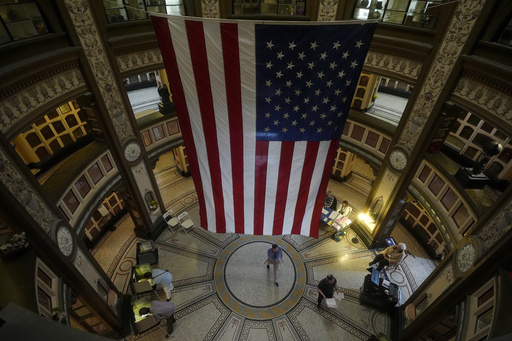In the recent national elections, a weary electorate has signaled a strong desire for former President Donald Trump to resume his role in the White House, showcasing a clear dissatisfaction with Vice President Kamala Harris and her nearly four years in office alongside President Joe Biden.
The Republican gained support from a public frustrated with the current direction of the country, leading 30% of voters to call for comprehensive changes in governance, as revealed by a significant survey involving over 120,000 voters nationwide. Even among those not favoring drastic shifts, a majority expressed a desire for substantial reforms.
Throughout the country and in crucial battleground regions, Trump attracted voters primarily concerned with economic issues and who called for more stringent immigration enforcement. These topics seemed to dominate the election dialogue, overshadowing other critical matters like democratic integrity and abortion rights, which were focal points for Harris’ supporters but failed to secure her a win.
Despite Trump’s success, it would be inaccurate to label it as a clear mandate. Many voters expressed apprehensions about Trump’s potential to concentrate power in a way that could steer the U.S. toward authoritarianism. A significant portion indicated concerns about electing Trump bringing about such dangers, yet over 10% of those expressing these fears still voted for him.
Trump’s support was notably bolstered by perceptions regarding economic management.
Widespread anxiety surrounding inflation had voters generally believing that Trump could handle economic matters and job growth more effectively than Harris. This sentiment was echoed in key swing states like Pennsylvania, Wisconsin, and Michigan, which reflected the prevailing national mood.
The proportion of voters reporting that their financial situations were worsening rose to about 30%, compared to roughly 20% in the last presidential election. A significant number were still grappling with the aftermath of inflationary pressures that peaked at a level unseen in four decades in June 2022. An overwhelming majority of voters expressed substantial concern about rising grocery prices, with around 90% citing them as an issue, alongside housing, healthcare, and fuel costs.
Trump’s outreach extended to traditionally Democratic bases as he garnered notable support from younger individuals, as well as Black and Hispanic voters, many of whom were disillusioned with the economic landscape. Young Black and Latino voters displayed a significant skepticism about the economy’s functionality under the current administration.
Compared to the 2020 elections, economic issues took precedence for these demographics this time around. In contrast to the previous election cycle, where COVID-19 and racial issues took center stage, this campaign saw a shift in focus towards economic concerns, which allowed Trump to gain traction among these groups, even though a majority still aligned with Harris.
Among younger voters, nearly half supported Trump, demonstrating an improvement from his previous performance. Around 75% of these individuals expressed discontent with the nation’s direction, with about one-third advocating for an overhaul of the government structures in place.
The support landscape for immigration policies also leaned towards stricter measures, particularly in battleground states.
More voters endorsed robust immigration policies than had been seen four years prior, aligning well with Trump’s tough stance. Around 40% of voters now believed that undocumented immigrants should be deported, reflecting an increase from 30% in 2020. Although most voters still supported offering legal status to undocumented individuals, this sentiment decreased since the previous election.
Trump has linked the rise in illegal border crossings to increased crime and made controversial claims regarding specific immigrant groups, leading to heightened discussions about deportation among Trump’s supporters, particularly in states like Pennsylvania, Michigan, and Wisconsin.
As Trump reclaims influence, he is likely to challenge existing global diplomatic norms, having questioned NATO commitments and advocated for escalated tariffs against both allies and rivals. A growing number of voters now advocate for a more isolationist U.S. role on the global stage—about 40% favoring a reduction in international engagement, as opposed to 30% in 2020.
Many Trump supporters voiced opposition to continued U.S. assistance to Ukraine in its conflict with Russia, diverging from policies reinforced under Biden. However, there appears to be some consensus on maintaining support for Israel amid its conflicts in the region.
Despite his polarizing demeanor, some voters seemed unfazed by Trump’s shortcomings. Almost 50% of voters conveyed apprehensions concerning a possible slide toward authoritarianism with another Trump term, yet roughly 10% still cast their vote for him. Approximately 60% labeled him as untrustworthy, and a majority expressed doubts about his moral character, yet around 10% from this group continued to support him.
Many voters remain divided on whether he can bring about the positive transformation he promises, reflecting uncertainty about his ability to unify the nation.


